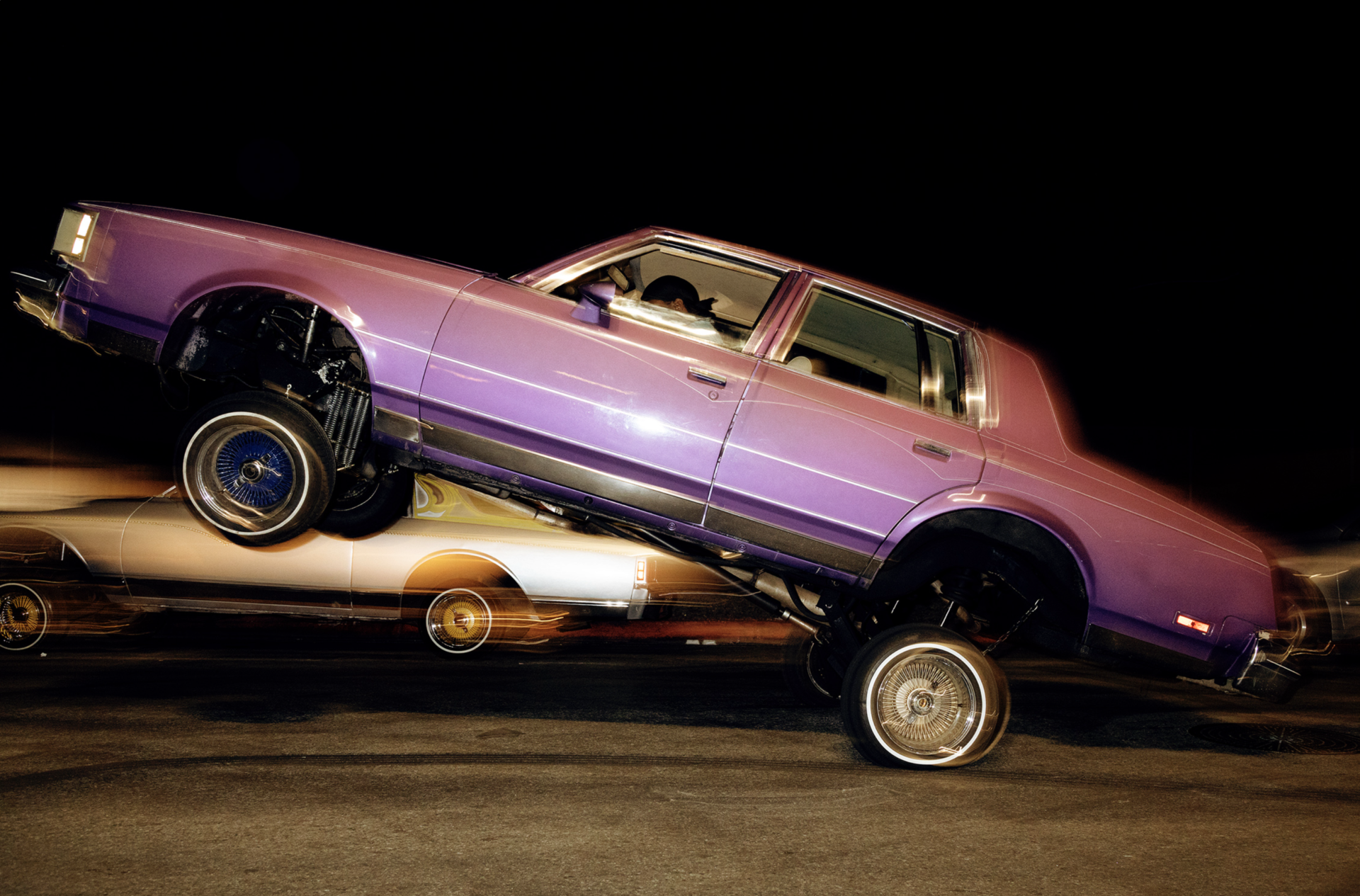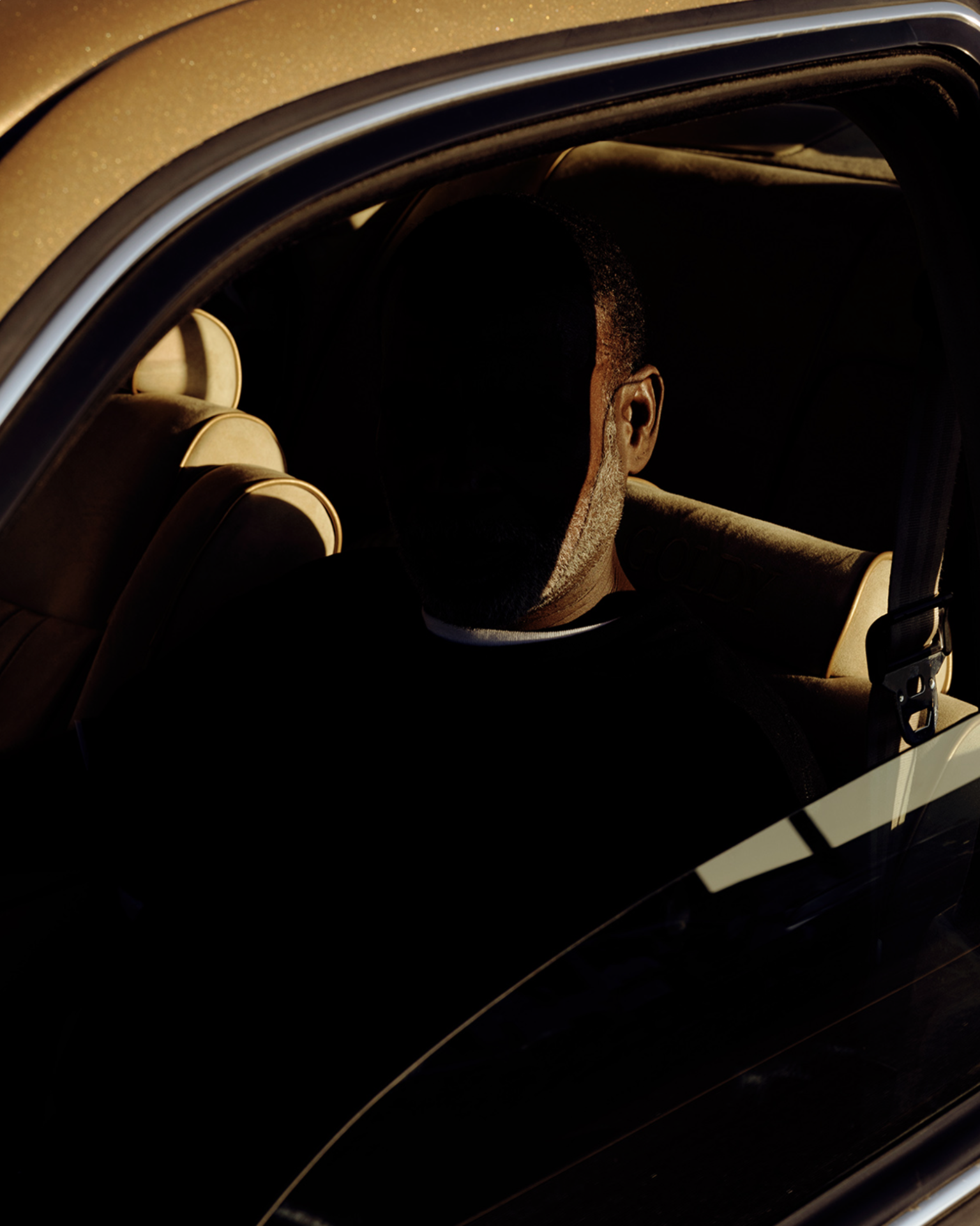
EDITORIAL
Stig De Block

What drove you to travel to Los Angeles in the first place?
I am a huge fan of American culture and its iconic signifiers: from the grit structure of cities to concrete parking lots, and from mid century Californian interiors to nineties West Coast hip hop. As a teen I’d find myself transfixed by the music videos of that time, and in particular the recurrent use of hydraulic lowriders. Visually I thought those were an incredibly compelling representation of the artists of that time.
It is tempting to draw comparison to some of the early iconic photographers like Stephen Shore and William Eggleston, who shared your passion for that same American visual landscape. How do you feel about that comparison?
I don’t think that’s entirely coincidental. During my masters in Graphic Design I made two books about so-called ‘non-places’, partially inspired by 20th century American photographers and their German counterparts. Both Eggleston and Shore were featured in that book. It included parking lots, ferry boats, harbours, empty highways and gas stations. The theoretical part of what these photographers were doing was what inspired me the most. I was still searching for my own outlet in that realm.
What was it like to finally arrive in this place that you had been dreaming about for so long?
A photography gig finally landed me in Los Angeles. Once I got there, I was blown away by the fact that all those references I had cherished for so long, actually converged in this one place – whether it was in terms of music or architecture or the general atmosphere. The second time I travelled down there, I was set on finding this community of lowriders, and decided to approach someone online who had been capturing the community with a GoPro. He agreed to meet but on the day of the appointment, he was unable to make it so I was left to my own devices. He gave me the address where the gathering was supposedly taking place, and off I went.


Being an outsider, armed with a camera, how did you approach this rather insular community?
At first it was an overwhelming situation to be in: hundreds of lowriders, families, T-shirt vendors and the like had gathered in this one parking lot, and the clash of aesthetics that came with it was just out of this world. I knew from that point that I wanted to document it but not necessarily motivated by the idea of creating a series or a book or an exhibition – I just wanted to submerge myself in this community, even if that meant I had to come back, multiple times.
That first time, I just started to approach people to ask them about their lowrider, to break the ice so to say. I sensed a little apprehension, but there was some curiosity as well. There was no way around it: I was this white European guy carrying a camera – the contrast couldn’t be more stark. People would ask me what brought me there and I would explain that for many years, I had been invested in lowriders and the culture but that the geographical distance prevented me from partaking. I was keen to learn more about it in all its facets. That really kickstarted a dialogue, and things sort of took a natural course. Over the next visits I would be invited into people’s homes – and that’s where I shot some of the more intimate portraits.
Is establishing a long-term relationship with your subject a necessity when it comes to documenting a community or subculture?
For me, it has been an important element of this project. I have spent five years capturing this community and their stamp of approval meant a lot to me. When I felt like I had completed a series, the first thing I did was to go back to present the outcome to them. It was received well – which obviously was great — but what funnily enough also transpired was a different approach of what we deem worth photographing. I did not necessarily just want to capture a lowrider in its totality. Details that might escape someone else were just as important to me: candy coloured paint jobs juxtaposed against flakey paint, faded autobiographical tattoos or chrome finishes. There is one photograph of a hand holding a bright red cloth pressed against the blue hood of a car: this mixture of material, textures and colour is where I find raw beauty.
Do you think this approach – of committing yourself to a subject for a longer period of time – is emblematic for your generation of photographers?
People often ask me: so what’s next? Which subculture will you be documenting now? I don’t necessarily have a desire to transplant what I have done with this project to some new context. Los Angeles remains a key departure point in my work, and there is no doubt I will keep on shooting this community – but it will probably engender new projects that are somehow derived or rooted in this one. What has sparked my interest early on in the process, for example, is the adaptation of this phenomenon in Japan. There is a community of lowriders there that is almost identical to the one in LA: the same cars, the same dress codes. I would love to see that for myself but that’s a project for the long haul. Overall, I am very curious to see how the scene and culture develops in the upcoming decades, and I am set on being part of its documentation.
Looking back at this project, what are some of the key lessons you learned as a photographer?
That you can only understand nuances in representations and intricacies of cultures if you immerse yourself and experience it first-hand.